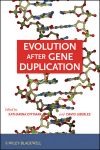Frankenfish: Genetically Modified Salmon
Critics call them “frankenfish.” Advocates call them delicious. Either way, a genetically engineered salmon may be served up on your plate sooner than you think.
 In the United States, over 90% of corn, cotton, soybeans, and sugar beets we grow and consume are already genetically modified (GM). Therefore, the absence of GM animals may seem unusual. However, last week a panel of scientific advisors met to make their recommendation to the FDA regarding AquAdvantage salmon—genetically modified salmon produced by the company AquaBounty. If the FDA grants its approval, AquAdvantage salmon will be the first genetically modified animal deemed fit for consumption in the United States.
In the United States, over 90% of corn, cotton, soybeans, and sugar beets we grow and consume are already genetically modified (GM). Therefore, the absence of GM animals may seem unusual. However, last week a panel of scientific advisors met to make their recommendation to the FDA regarding AquAdvantage salmon—genetically modified salmon produced by the company AquaBounty. If the FDA grants its approval, AquAdvantage salmon will be the first genetically modified animal deemed fit for consumption in the United States.
AquAdvantage salmon are genetically modified to grow twice as fast as their wild counterparts. Scientists injected fertilized eggs of Atlantic salmon (Salmo salar) with genes from the Pacific Chinook salmon (Oncorhynchus tshawytscha) and the ocean pout (Zoarces americanus). The Chinook gene enhances production of a growth hormone, and the pout gene forces the hormone to remain active all year long. To prevent interbreeding, only female embryos will be produced, and they will all have triploidy (three sets of chromosomes) to ensure reproductive sterility.
In spite of AquaBounty’s promises of genetic sterility and physical confinement, AquAdvantage salmon could potentially decimate wild fish populations if released into the wild, according to studies from the National Academy of Sciences1 and Purdue University2. Yet, in spite of critics’ reservations, other animals are being genetically tweaked, as well.
 GloFish are zebrafish that have been injected with a florescent protein gene from jellyfish. While researchers continue to develop these fish as pollution detectors, GloFish are available for commercial sale as pets in the United States, having been approved by the FDA in 2003.
GloFish are zebrafish that have been injected with a florescent protein gene from jellyfish. While researchers continue to develop these fish as pollution detectors, GloFish are available for commercial sale as pets in the United States, having been approved by the FDA in 2003.
Enviropig is a more “environmentally friendly” Yorkshire pig—particularly one that excretes 65% less phosphorus than a normal pig. Researchers at the University of Guelph altered the pigs’ genes so that they produce phytase—an enzyme that breaks down phosphorus—in their salivary glands. The pig was approved for controlled production in Canada in early 2010.
Even cattle have even been subject to genetic tinkering: in 2006, the biotechnology company Hematech, Inc. announced the successful creation of a cow immune to bovine spongiform encephalopathy (BSE), or mad cow disease. By disabling the gene responsible for producing prions (misshapen brain proteins that cause BSE), the company cloned 12 prion-free—and therefore BSE-free—cows.3
READ MORE about:
- Molecular Research in Aquaculture
- The Atlantic Salmon: Genetics, Conservation and Management
- Global Livestock Health Policy
1. Devlin, R. (2004). Population effects of growth hormone transgenic coho salmon depend on food availability and genotype by environment interactions Proceedings of the National Academy of Sciences, 101 (25), 9303-9308 DOI: 10.1073/pnas.0400023101
2. Howard, R. (2004). Transgenic male mating advantage provides opportunity for Trojan gene effect in a fish Proceedings of the National Academy of Sciences, 101 (9), 2934-2938 DOI: 10.1073/pnas.0306285101
3. Richt, J., Kasinathan, P., Hamir, A., Castilla, J., Sathiyaseelan, T., Vargas, F., Sathiyaseelan, J., Wu, H., Matsushita, H., Koster, J., Kato, S., Ishida, I., Soto, C., Robl, J., & Kuroiwa, Y. (2006). Production of cattle lacking prion protein Nature Biotechnology, 25 (1), 132-138 DOI: 10.1038/nbt1271
 Featured on EcoPressed Gulf Oil Dispersants
Featured on EcoPressed Gulf Oil Dispersants























